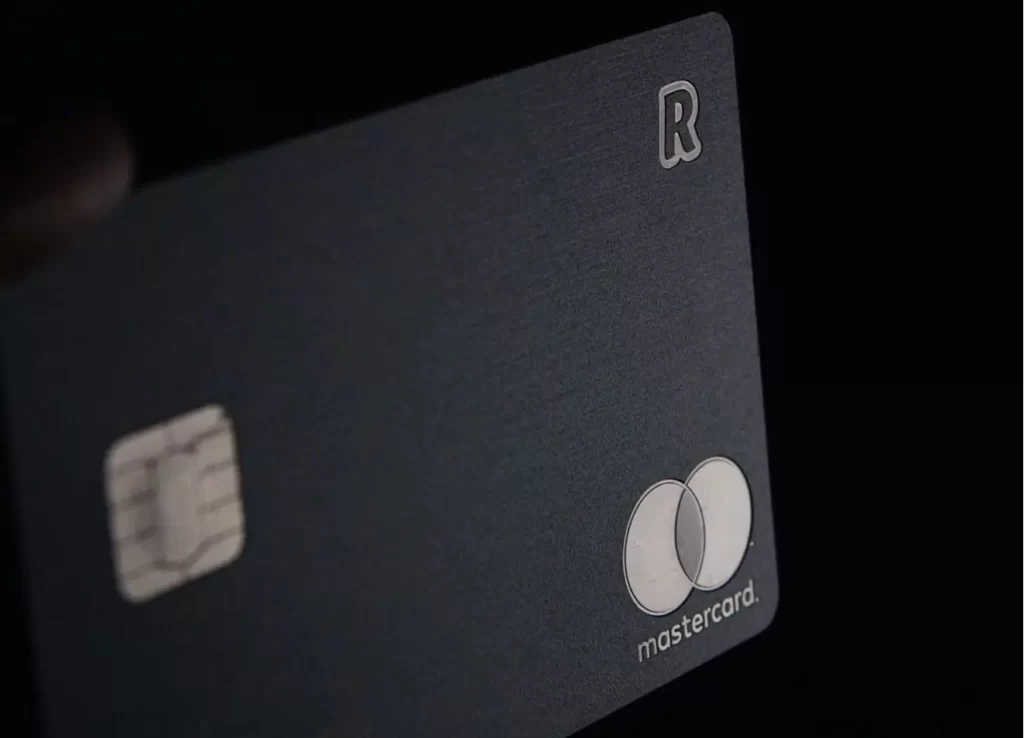Social media is no longer just a way to stay in touch with friends or share photos; it has become an essential part of daily life across the Middle East and North Africa (MENA). The way people interact with these platforms has evolved, creating exciting opportunities for businesses to reach new customers and strengthen relationships with existing ones. Let’s take a deeper look at the key social media trends shaping the region in 2024.
Contents
- 1 The Role of Social Media in MENA’s E-commerce Growth
- 2 Privacy and Regulation: New Challenges for Social Media in MENA
- 3 Social Media Statistics For The United Arab Emirates
- 4 Challenges and Considerations:
- 5 How GO-Globe Analyzes Emerging Trends of Social Media in the Middle East
- 6 Future Predictions for Social Media in MENA (2025 and Beyond)
Social Media’s Growing Influence in MENA
Social media usage across MENA has grown at an extraordinary pace. From entertainment to news, shopping, and even political discourse, these platforms have become the go-to source for information and interaction. This shift is largely driven by the region's younger demographic, where over 90% of young Arabs engage with social media daily. Platforms like Facebook, Instagram, and Twitter are not just tools for communication; they have become a central part of the region’s social fabric.
This cultural shift has also paved the way for digital marketing strategies that meet users where they spend the most time. Brands can no longer afford to ignore social media's influence. Instead, they must embrace it as an integral part of their marketing strategies. In MENA, Facebook still leads with 190 million active users, followed closely by Instagram, which has grown to over 65 million users across the region. Social media platforms serve as the backbone for businesses looking to connect directly with consumers and promote their products.
Popular Platforms in MENA
The social media habits of MENA users vary from country to country, but there are clear favorites. Facebook remains the dominant platform, with countries like Egypt accounting for the largest user base. However, newer platforms have gained significant traction, especially among younger users. Instagram continues to grow in popularity, especially in Saudi Arabia and UAE, where high engagement rates make it a prime channel for brands targeting younger demographics.
Platforms like YouTube and Snapchat also continue to perform well in MENA. YouTube has particularly seen a rise in usage among millennials, with 78% of Egyptian millennials watching content daily. Meanwhile, Snapchat ranks as the fourth largest social media platform in Saudi Arabia, indicating its strong appeal among users aged 18-34. This data highlights the region’s evolving social media landscape, where multiple platforms serve distinct purposes for different age groups and user preferences.
Shift in Platform Dominance Across Various Countries
The dominance of social media platforms across MENA countries has been subject to significant shifts in recent years. Historically, Facebook led the region, especially in Egypt and other North African nations. However, a noticeable trend is the rise of platforms like Instagram and Snapchat among younger users. Instagram has become the preferred platform for younger Arabs, especially in the UAE and Saudi Arabia, thanks to its visual-first appeal and engaging features like stories and reels.
While Facebook remains the largest social network in terms of active users, it faces increasing competition in markets like Turkey, Kuwait, and Qatar, where Instagram has surpassed it in terms of engagement. This shift is reflective of broader global trends where younger audiences, who are more focused on visual content and instant communication, prefer platforms like Instagram and Snapchat. The ease of sharing multimedia content, from photos to short videos, has made these platforms more appealing.
Meanwhile, Twitter has seen a decline in usage, particularly in countries like Egypt and Morocco, where the platform once dominated discussions around news and politics. Despite this decline, Saudi Arabia and Turkey continue to be strong markets for Twitter, maintaining its relevance for real-time updates, public discourse, and official announcements.
YouTube, too, has seen a surge in usage in MENA, driven by the popularity of video content, particularly among millennials. In Egypt, the platform is the go-to source for everything from entertainment to education. With the rise of video content, including live streaming and vlogs, YouTube has become essential for brands seeking to engage with a broader audience, especially when targeting the youth demographic.
The rise of TikTok is another key trend in the region. While still relatively new compared to older platforms, TikTok’s focus on short-form, viral video content has allowed it to carve out a niche among MENA’s younger users. In Saudi Arabia and the UAE, TikTok has gained massive traction, particularly among Gen Z. The platform’s emphasis on creativity and humor makes it an ideal tool for brands to experiment with new content formats and engagingly reach younger audiences.
The Role of Social Media in MENA’s E-commerce Growth
Social media has become more than just a platform for staying connected. It's now a crucial part of the e-commerce ecosystem, particularly in the Middle East and North Africa (MENA). As shopping increasingly goes digital, platforms like Instagram and Facebook have transformed how businesses in the region engage with customers. This is especially true for businesses aiming to tap into the region's growing online shopping trends.
How Platforms Like Instagram and Facebook Impact Online Sales?
Social media platforms in MENA, such as Facebook, Instagram, and WhatsApp, are no longer just about socializing. They have evolved into powerful tools that businesses use to boost their sales. For example, Instagram's shoppable posts allow users to buy products directly from the app, removing the need to navigate away from the platform. This smooth integration of shopping features has made Instagram a primary hub for e-commerce in the region.
Facebook, with its expansive user base across the MENA region, offers businesses a targeted approach to advertising. With advanced ad targeting features, businesses can create ads that cater to specific demographics, interests, and behaviors, resulting in higher engagement and conversions. MENA's growing adoption of mobile-first strategies makes these platforms even more effective, as users can shop anytime, anywhere.
In a region where mobile phone usage is high, the integration of e-commerce features on these social platforms allows businesses to reach users who are increasingly online and looking for easy ways to shop. This user behavior has led to a significant uptick in purchases driven by social media exposure.
Rise of Influencer-Driven Sales in the Region
Influencer marketing has emerged as one of the most powerful tools for driving sales in MENA. The region's social media users trust influencers, often more than traditional advertisements. Influencers, especially those in fashion, beauty, and lifestyle sectors, have become the voice that persuades consumers to make purchasing decisions.
In MENA, influencers on platforms like Instagram and TikTok are more than just brand ambassadors; they are trusted voices who shape the buying choices of millions. These influencers create a sense of authenticity that traditional marketing can’t match. When influencers promote products, their followers feel they are getting an insider's view of the product or service, which creates a stronger emotional connection and ultimately drives sales.
The impact of influencer-driven sales has been so significant that even global brands are shifting their focus to regional influencers for marketing campaigns in the MENA region. According to various studies, influencer marketing has been shown to improve engagement rates and increase sales in the Middle East more effectively than traditional advertising.
Privacy and Regulation: New Challenges for Social Media in MENA
The Middle East has seen rapid digital transformation, but with increased online activity comes heightened concern over privacy and regulation. As social media continues to shape the daily lives of millions across the region, governments are taking more significant steps to regulate the platforms that connect people. For businesses and individuals operating in the social media space, understanding these changes is crucial. Here’s what you need to know about privacy updates and government regulations, and how you can ensure your brand stays compliant.
Key Updates on Data Privacy Laws Across the Region
In recent years, the Middle East has been tightening data privacy laws to protect user information. The region's growing digital footprint and increasing concern over cyber threats have forced lawmakers to respond.
1. UAE’s Data Protection Law (2021): In 2021, the UAE introduced its own data protection law, which mirrors aspects of the European Union’s GDPR. This law applies to any company handling personal data of UAE residents, whether they are based locally or internationally. The law emphasizes the protection of sensitive personal data, with strict penalties for violations.
2. Saudi Arabia’s Personal Data Protection Law (2021): Saudi Arabia followed suit with its own data protection legislation in 2021. The Saudi Personal Data Protection Law regulates how businesses collect, process, and store personal data. Companies need to have clear consent from users before collecting their data, and data subjects have the right to access, rectify, or delete their information.
3. Qatar’s Data Privacy Framework (2022): Qatar’s approach to data privacy is evolving, with recent amendments to its privacy framework that focus on transparency and user consent. The new regulations have also placed stricter rules on the processing of biometric data, giving individuals greater control over their personal information.
These developments signal a shift towards more stringent control over personal data in the region. Businesses using social media platforms need to stay on top of these changes and adjust their data practices accordingly.
Impact of Government Regulations on Platforms like Facebook and Twitter
Government regulations are reshaping how social media platforms operate in the Middle East. With stricter laws on data privacy, both global and regional social media platforms are under pressure to comply.
1. Content Moderation and Censorship:
As social media platforms like Facebook and Twitter continue to grow in the Middle East, governments are becoming more active in regulating what content can be shared. These platforms are now being required to remove content deemed harmful, misleading, or politically sensitive, which often leads to government-mandated censorship.
In Saudi Arabia, for example, there have been several cases where content was deleted due to non-compliance with local regulations. This includes both political and religious content that doesn’t align with the government’s stance. Facebook and Twitter have had to adapt to these regulations by developing specific moderation policies for each country in the region.
For brands and businesses operating in these countries, this means you must understand the local content rules and ensure your campaigns don't run afoul of local guidelines. Failing to do so could result in your content being removed or even legal penalties for non-compliance.
2. Data Storage and Localization:
Another major impact of government regulations is the requirement for social media companies to store user data within the borders of the country. For example, in some parts of the Middle East, authorities now demand that all user data collected by social media platforms be stored on servers located in the country. This allows the government to access and regulate the data more easily.
Platforms like Facebook and Twitter have started working to comply with these demands by building local data centers in the region. This can impact your business if you rely on these platforms to reach a local audience. You’ll need to be aware of how data storage practices affect the user experience and how it may influence consumer trust.
Social Media Statistics For The United Arab Emirates
 Infographics by GO-Globe SEO Muscat
Infographics by GO-Globe SEO Muscat
- DataReportal’s figures show that there were 10.73 million active social media user identities in the United Arab Emirates in January 2024.
- As a result, our latest figure for social media in the Middle East might appear to be quite different from the values that we published in previous years.
- Because of this, we advise caution when comparing the social media user values published in this year’s reports with those published in previous years, especially because changes in reported values may be the result of “corrections” in the source data, as well as changes in actual user behavior.
- For clarity, Kepios' analysis shows that social media users in the United Arab Emirates increased by 1.7 million (+19.4 percent) between early 2023 and the beginning of 2024.
- The number of social media users in the UAE at the start of 2024 was equivalent to 112 percent* of the total population, but it’s important to stress that social media users may not represent unique individuals (see our detailed notes on data to learn why).
- Meanwhile, data published in the ad planning tools of top social media platforms indicates that there were 10.73 million users aged 18 and above using social media in the UAE at the start of 2024, which was equivalent to 136 percent* of the total population aged 18 and above at that time.
Read More: M-Commerce Statistics And Trends
Challenges and Considerations:
While the social media in the Middle East offers exciting opportunities, there are also challenges that businesses and individuals need to consider:
- Data Privacy Concerns: As social media use intensifies, so do concerns about data privacy. Users are becoming increasingly aware of how their data is collected and used by platforms. Governments across the Middle East are also implementing stricter regulations to protect user privacy, which may impact how social media platforms operate in the region.
- Content Regulation: The issue of content regulation is another challenge. Balancing freedom of expression with cultural sensitivities is a complex task. Social media platforms need to implement clear guidelines and enforce them effectively to create a safe and inclusive online environment.
Combating Misinformation: The spread of misinformation and fake news is a growing concern on social media platforms. Developing effective strategies to combat misinformation and promote media literacy is crucial for ensuring a healthy online ecosystem.
How GO-Globe Analyzes Emerging Trends of Social Media in the Middle East
With GO-Globe, it has always been a priority to understand the dynamic landscape of social media in the Middle East. Social media has become part of daily life, molding communication, business, and culture across the region. With the help of expertise in the analysis of these trends, we enable a business to adapt and succeed in this fast-evolving market.
Step 1: Gathering Data from Trusted Sources
Our approach begins with sifting through information from sources such as government reports and surveys combined with insights from some of the biggest players in tech. This is how we ensure our conclusions are grounded in the right and updated information. For example, we witnessed such rapid development in social media in the UAE that platforms like Facebook and Instagram dominated, showing us valuable aspects of users' behavior. We focus on how this communication, shopping, and even education take place and devise a strategy accordingly for specific business needs.
Step 2: Identifying Platform-Specific Trends
We analyze how each of the social media platforms serves a different purpose and is adopted across different demographics. Platforms like Snapchat, Instagram, and TikTok have witnessed massive growth, especially among younger audiences. With contrasted trends of platforms like Facebook, which still holds its grounds robust for a wide user base, this article takes it helps us understand these patterns so businesses can realign their strategies to what works best in social media in the Middle East.
Step 3: Understanding Regional Influences
The cultural nuances play a vital role in social media trends. In the Middle East, weekends, religious festivals like Ramadan, and significant events shape online activity. During Ramadan, viewership increases on YouTube, typically for dramas and family-friendly content. Here at GO-Globe, we understand these local dynamics and guide businesses to leverage them effectively, ensuring that brands remain relevant and interesting to their audiences.
Step 4: Monitoring the Impact of Emerging Trends
Our company tracks all changing trends – video-based content, influencer marketing, live shopping, and so on. For example, the explosion of video content in social media in the UAE has compelled business entities to upscale YouTube and Instagram Reels as a preferred platform. Through these trends, GO-Globe empowers businesses to make strategic decisions and gain an upper hand over competitors.
Step 5: Using Technology to Analyze Patterns
We use high-end tools and technology to give accurate insights. Our data-driven approach unravels the patterns in social media in the Middle East and gives detailed analysis in terms of user preferences, peak engagement times, and preferred formats for content. With such information, businesses will create campaigns that speak to their target audience.
Step 6: Adapting to Local and Global Changes
The social media landscape is never static. Changes in algorithms, privacy policies, and user behavior constantly redefine the digital world. At GO-Globe, we adapt our strategies to reflect these changes while ensuring that businesses maintain strong connections with their audiences. Our focus on social media in the UAE and beyond helps brands stay relevant in an increasingly competitive market.
GO-Globe takes pride in its ability to analyze the always-changing trends of social media in the Middle East. Blending advanced technology with local expertise, we help businesses be confident in this dynamic environment. No matter if you want to tap into users across the region, or specifically in the UAE, we will yield measurable results for you.
Future Predictions for Social Media in MENA (2025 and Beyond)
Social media in the MENA region has undergone rapid growth, and the future looks even more promising. As we move toward 2025, new platforms, technological advancements, and shifting user behaviors will shape how people engage online. Understanding these changes will help businesses and marketers stay ahead of the curve and connect with their audiences in meaningful ways. Let’s dive into the trends, emerging technologies, and opportunities that lie ahead for social media in the Middle East.
Trends to Watch for in the Coming Years
As social media continues to evolve in MENA, certain trends are expected to dominate. Here's a snapshot of what's to come:
- Video Content Growth: Video will remain at the forefront, with platforms like YouTube, TikTok, and Instagram seeing more video-focused content. Short-form videos, particularly those on TikTok and Instagram Reels, will become even more popular as users increasingly turn to visual content for quick entertainment and information.
- Social Commerce Expansion: As e-commerce and social media merge, platforms like Instagram and Facebook will enhance their shopping features. Social commerce, which allows users to buy directly from social media platforms, will continue to grow, especially in countries like the UAE and Saudi Arabia, where mobile shopping is prevalent.
- User-Generated Content (UGC): Brands will put more focus on UGC as it’s proven to build trust. Consumers in the region are more likely to trust content shared by peers rather than brands themselves, making UGC a key driver for brand engagement.
- Increased Mobile Usage: The Middle East has one of the highest mobile penetration rates globally, and this will only continue to increase. Mobile-first content and strategies will remain essential for reaching MENA audiences, especially in markets like Egypt, Saudi Arabia, and the UAE.
Emerging Platforms and Technologies like AI and AR
Social media platforms in MENA are not just evolving in terms of features but also in the technologies they integrate. Here are some of the technologies that will shape the social media experience in the region:
- Augmented Reality (AR): The use of AR in social media will become even more immersive. Platforms like Snapchat and Instagram already offer AR filters, but as the technology improves, we can expect more interactive and personalized experiences. AR can change the way people shop, engage with ads, and consume content, allowing users to try products virtually before making a purchase. For marketers, this opens up endless possibilities to create more engaging campaigns, especially in the fashion, beauty, and home décor sectors, where visual appeal is key.
- Artificial Intelligence (AI): AI is playing a significant role in shaping the future of social media. While it’s already used for content recommendations, AI will become even more crucial in understanding user behavior, segmenting audiences, and delivering personalized content. AI tools will help businesses create smarter, more targeted campaigns and enhance customer support through chatbots and automated interactions. In the coming years, AI could also improve the ability to detect and prevent misinformation, ensuring that social media platforms in MENA remain trustworthy and credible.
- Virtual Reality (VR): While AR will likely lead the way in the short term, VR is making headway in the MENA region, especially within gaming and entertainment. Platforms such as Facebook’s Oculus are growing in popularity, and businesses can leverage VR to create fully immersive brand experiences or virtual showrooms. Though still in its early stages, VR has the potential to reshape online engagement by allowing users to interact with brands in more dynamic and lifelike ways.
- Voice Search and AI-Powered Content: With the increasing use of voice assistants like Google Assistant, Amazon Alexa, and Apple's Siri, voice search is set to grow in MENA. As social media platforms integrate voice search functionality, businesses will need to optimize content for voice queries, ensuring they remain discoverable. Furthermore, AI-powered content generation will continue to evolve, making it easier for brands to produce high-quality, personalized content at scale.















